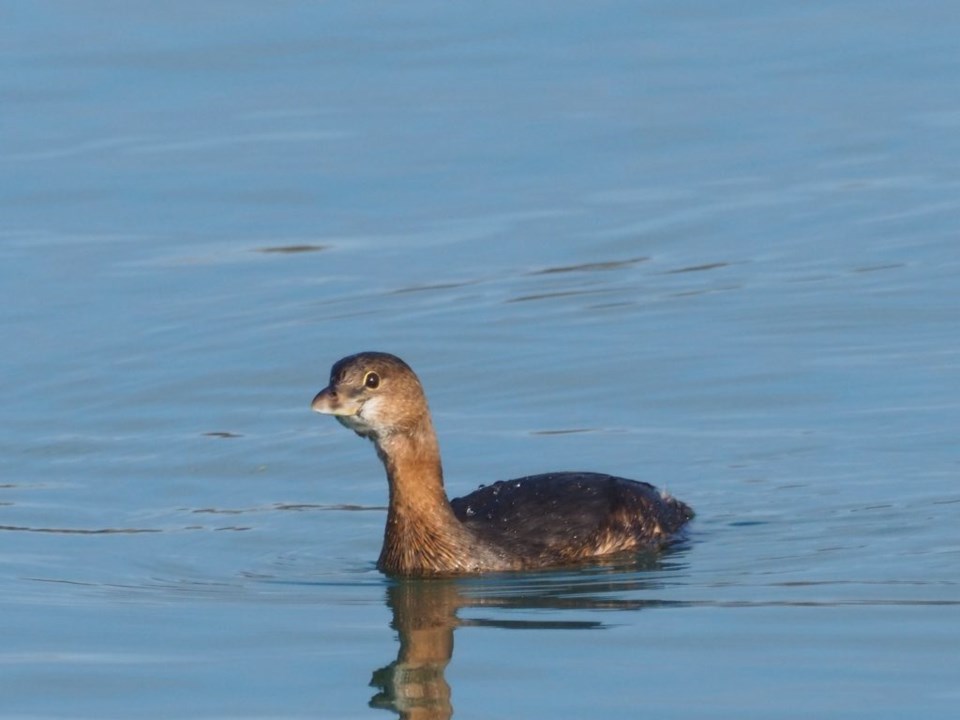
A single specimen of the pied-billed grebe (Podilymbus podiceps) was spotted originally in the marina beside Nelson Park (beside King’s Point on Ricardo Street).
It was seen bobbing along and diving in among the much larger Canada geese. Its size was diminutive in comparison. It was surprisingly agile in its ability to dive and seemed to be able to stay long underwater and swim comparatively long distances. This made it difficult to determine where exactly it would surface. The following week, I observed it out along the waterfront and was able to get a few more photographs.
This little diving grebe is one of the smallest and reportedly quite a common member of the grebe family. It gets its name due to the fact that during breeding periods its beak has a black band thus ‘pied’ or having two colours. Their brown bodies are built differently than the diving waterfowl commonly seen and instead of having to lift slightly out of the water and dive, they can sink quickly, much like a submarine, underwater. This is due to their ability to ‘squeeze’ air out from their feathers and air sacs. As they are able to achieve neutral buoyancy in this fashion, they don’t have to fight to stay underwater like other diving species. They can even submerge slowly with only their heads appearing above water.
They feed on a variety of items, including small fish, aquatic insects and other invertebrates, frogs, tadpoles and aquatic plants. In our waters, zebra mussels and round gobies would probably be utilized as a food source during winter. Another interesting fact is that they construct floating nests from vegetation. Their call is loud and unusual to hear. All in all, another interesting bird to be on the lookout for in ponds and marshes in spring and summer.